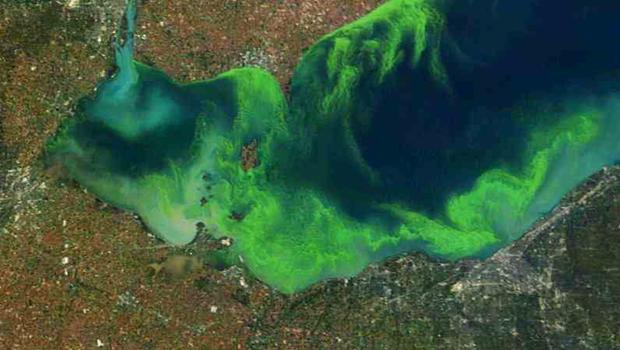Opinion From the Clean Water Fellow Desk, by Nicole Tabit
Lake Erie, once one of the most productive Great Lakes, is now dying. The shallow waters are both a blessing and a curse- they allow for high productivity in fish and macroinvertebrate populations, but this also means it is easier for algal blooms to get out of hand, as with the recent blooms in the summer of 2014. These recent outbursts show that we must create policy to create change. Water pollution issues not only ruin entire ecosystems, but can also pose human health risks. This issue has now been made public, and many cities across the state and the country are calling for action.

The largest nutrient runoff offender is agricultural production in the watershed. To put a limit on fertilizer use, the Ohio government passed several bills over the years to regulate fertilizer application. The first of these is House Bill 61, which implements new guidelines of best management practices for fertilizer application. Senate Bill 1 is another, that has similar guidelines to House Bill 61, but also includes manure phosphorous practices. Each of these bills are passed to limit the phosphorus from farms and other publically owned treatment works.
The most effective way to create change in the region is by investing in structural change. The Ohio Clean Lakes Initiative, outlined by the Ohio Department of Natrual Resources (ODNR), is currently in the implementation stage. This initiative gives funding to farmers in the Great Lakes Basin from the United States Department of Agriculture to implement Best Management Practices. In the way of actual steps toward the goal, controlled drainage structures have been installed at many farms, to prevent excessive nutrient runoff which improves agricultural production. The Clean Lakes initiative works with the ODNR to help farmers manage these actions as well.
The most important part of keeping policy current is to examine farming practices, while helping make them economically efficient, as economy remains a large factor in policy making on farming restrictions. Interest groups and bureaucratic agencies have created some fairly effective policy change. However, the policy implemented relies heavily on monitoring by other agencies, work by the state, and volunteers to do much of the cleanup work in restoring wetlands around the lake. Interest groups also with the Environmental Protection Agency to enforce these policies through mainly a complaint process, resulting in fines on defectors. Policy could be more specific to halt phosphorus algal bloom rates, by implementing more specific guidelines, and by enforcing restrictions on defectors. Effective policy is strongest when it works with requests of the public and interested groups, and still doesn’t rely only on these actors to enforce it.
Unfortantely harmful algal blooms are not unique to Ohio. Read more about how blue-green algae affects Iowa's Waters and learn what Wisconsin is doing to protect water quality.
Did you know that laudary detergents also contain phosophorus which spur algae blooms? Here are three ways to make your laundary routie easier on your clothes, your pocketbook, and the planet.